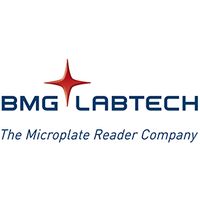Considerations for Lab Managers in Choosing a Microplate Reader
In today's high-tech, digitized laboratory environments, nobody pays very much attention to the humble plastic microplates that enable so much of the work researchers do today. Still, they're a staple technology that no modern laboratory could do without. They're especially critical now, as labs all around the world scramble to gear up to meet the challenge posed by the rapidly-spreading 2019 Novel Coronavirus COVID-19.
In fact, it's important to note that the first microplates ever used in a lab came into existence because of an earlier pandemic, influenza. They were invented by Dr. Gyula Takátsy, who in 1951 sought a way to increase the sample throughput of his laboratory and ended up pioneering the development of the 96-well microplates that are all but standard today.
Perhaps even more important, however, are the high-quality microplate readers that laboratories are going to have to rely on to perform high-throughput screenings necessary to process the thousands – if not millions – of IgG ELISA kits that are no doubt headed their way. It is those devices that will form the necessary backbone of the multinational response to the pandemic, especially if there's going to be any chance of slowing it down and eventually ending the threat.
With that in mind, here's a brief overview of what to consider for lab managers to use as they make purchase decisions for new or upgraded microplate readers in the coming weeks and months.
Primary Considerations
Although handling ELISAs may be a major motivating factor pushing labs to purchase additional microplate readers right now, that doesn't mean deciding on which one to purchase is an easy decision. It's wise to instead think beyond the current use cases to determine what feature sets or capabilities will be most important to the lab's future operations.
In general, that means the two primary considerations in the decision are throughput and flexibility. First, for labs where processing speed is most important, the decision should lean toward a reader that can screen everything from a 96-well microplate up to the 1536-well variety in two minutes. Right now, that kind of throughput might be essential for many labs, especially in readers that measure absorbance – allowing for the quick processing of ELISAs.
For most labs, however, there's typically an ongoing need to process a variety of assays. That's where the second consideration, flexibility, comes into play. In general, most labs use microplate readers that include the absorbance, fluorescence, and luminescence modalities. Less common, but still widely-used advanced modes include fluorescence polarization and time-resolved fluorescence. Investing in new equipment that won't be able to adapt to the lab's ongoing needs would be a waste of resources, so a multimode instrument is generally preferable.
Additional Options and Upgradability
After choosing which modes to prioritize and weighing the need for high throughput in laboratory workflows, it's time to evaluate additional equipment options as well as capacity for upgradability. For example, some microplate readers require manual adjustment of PMT gain voltages. Depending on the assay, this can be time-consuming and also possibly lead to a loss of sensitivity in detection. Others include automated dynamic range selection which not only simplifies detection setup but yields equally reliable results with both bright and dim samples.
In addition to such options, some of today's high-end microplate readers also can be upgraded with additional modes and features after their initial purchase. Having that ability can add to the upfront costs, but pay dividends down the line when the lab's needs change (as they always will). Also, some microplate readers can work with additional modules like programmable injectors, stackers, and atmospheric control units that can enhance the unit's capabilities and overall speed. In some cases, the added flexibility gained through these features is well worth whatever additional costs are associated with them.
Making the Call
What's important is to apply a long-term view when evaluating these and other options that today's microplate readers present. It's tempting, especially now, to react to current events and prioritize short-term needs over long-term equipment viability. In almost every case, that would be a mistake. This is especially true when considering the fluidity of the current situation and the fact that no reasonable lab manager could hope to divine what's coming next.
So, the bottom line here is that a balanced approach to all microplate reader purchase decisions is advisable for the vast majority of labs facing the prospect of needing to scale up operations rapidly. By opting for models that feature decent throughput, flexibility, and a high level of upgradability, it's hard to make a poor choice, no matter what tomorrow brings. What matters is what your lab does with the equipment once it's there – and that's producing results that advance the cause of science and the human condition as a whole.








